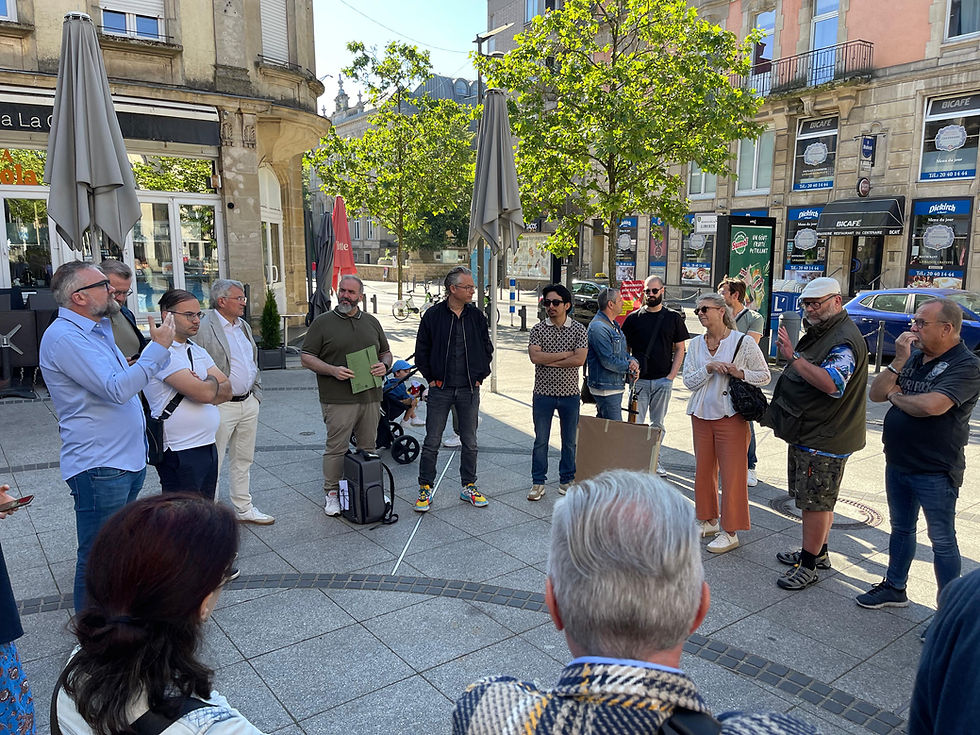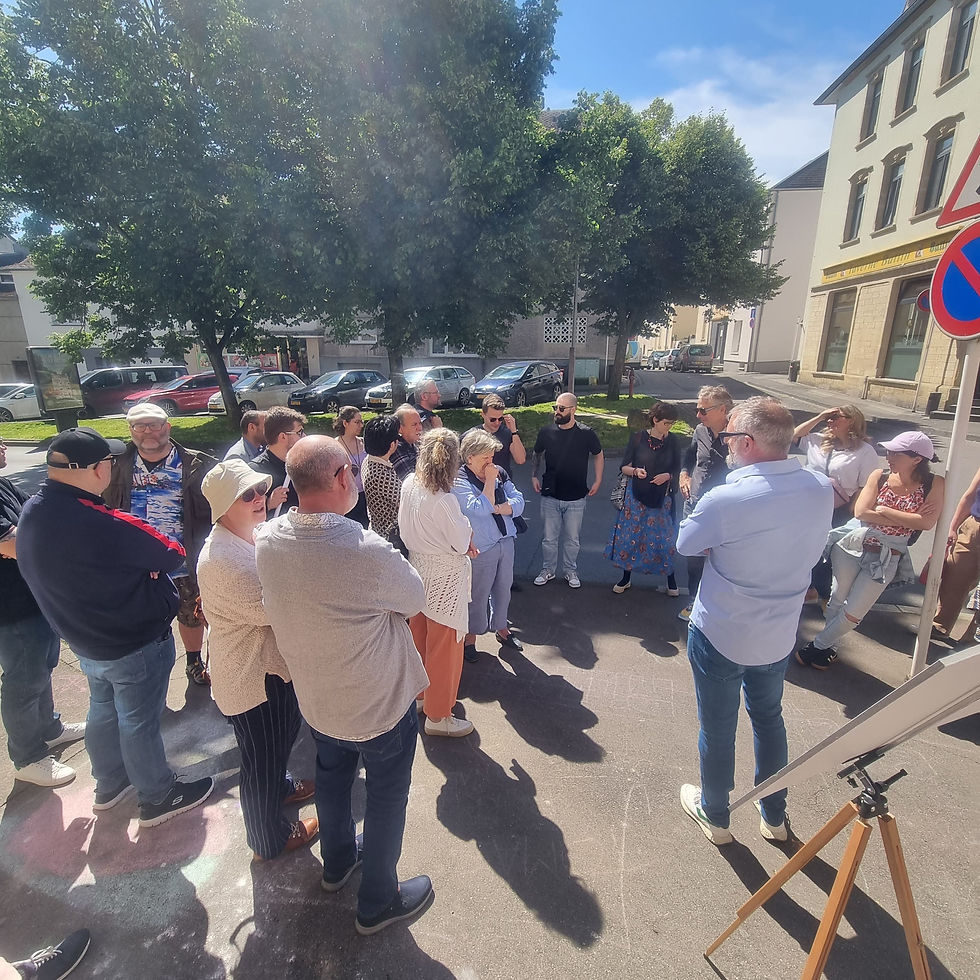Workshop “Together for Net-Zero Mobility”
- David Everard

- Jun 7, 2024
- 2 min read
Updated: Oct 19
A Saturday that moved.
The shops were still opening when our group gathered on the square—parents with kids, a few cyclists, interested citizens, councillors, engineers. We set off together, not for a presentation but for a walk-audit: Market Square → Opkorn junction → Rue Woiwer → Rue de Longwy. It was the third stop in a four-part journey of 2024 toward Differdange’s Climate City Contract and the EU’s 100 Net Zero Cities mission. Our role at Everard Consulting was simple: create space for people to look, listen and decide what “better mobility” means on these actual streets.

How we worked—lightweight and on street.
Ahead of the day, the city opened a public interactive map (6–20 May). Residents pinned places where walking felt unsafe, cycling broke off, or buses didn’t connect. We brought those pins to the pavement. Over the morning we collected 117 inputs in total—short, concrete observations: “these lights don’t match the flows,” “footway too narrow here,” “cycle route good, but hard to reach,” “after school + bin collection = gridlock.” Nothing abstract; just what people face during a day in Differdange.

What stood out.
Three threads kept coming back:
Calmer, clearer streets. Lower speeds at the right spots; signal phases that match real movements; marked, continuous footways; crossing points where people actually cross.
Joined-up cycling. Link the good pieces that already exist; make access to them obvious; avoid forcing detours that push people back to the car.
Human-centred planning. Every tweak—an extra metre of footway, a retimed light—has knock-on effects. The group asked for whole-network thinking, not isolated fixes.

Turning notes into a plan.
Our job didn’t end with the walk. We consolidated the comments and fed them—point by point—into Differdange’s Climate City Contract. The city team can now prioritise high-impact, real-world interventions: test, measure, adjust, deploy. It’s the kind of agile loop we like to set up with clients: quick pilots, fast feedback, visible change.

Why it matters.
Mobility is climate policy you can feel under your feet: quieter streets, safer crossings, easier trips to school or the chemist. Acting costs something; not acting costs more—in safety, in air quality, in time lost to congestion.

What we took away.
Days like this remind us that the best design tool is often a conversation in front of a tricky junction. Our role is to make that conversation productive and to carry its outcomes—faithfully—into the technical work that follows.

Join the next steps.
If you live or work in Differdange, keep an eye on the upcoming trials and share your experience. And if your city is grappling with similar questions, we’re always happy to set up a walk-audit, structure the feedback, and help you turn it into action—quietly, practically, together.






Comments